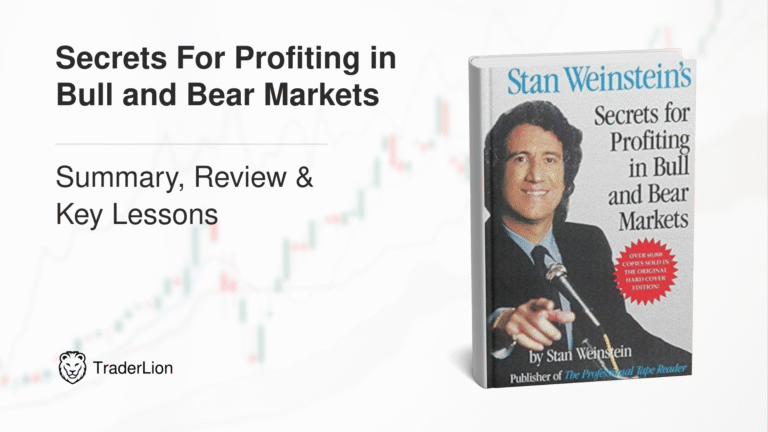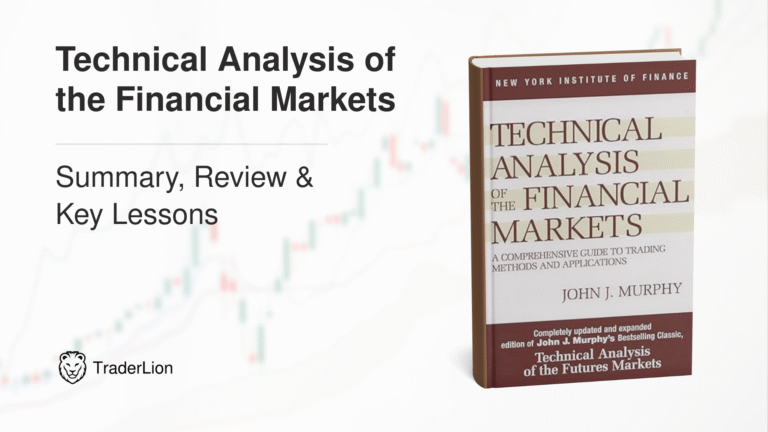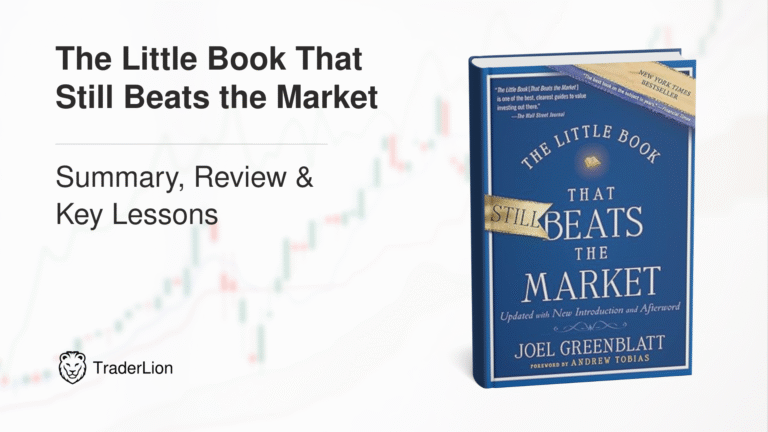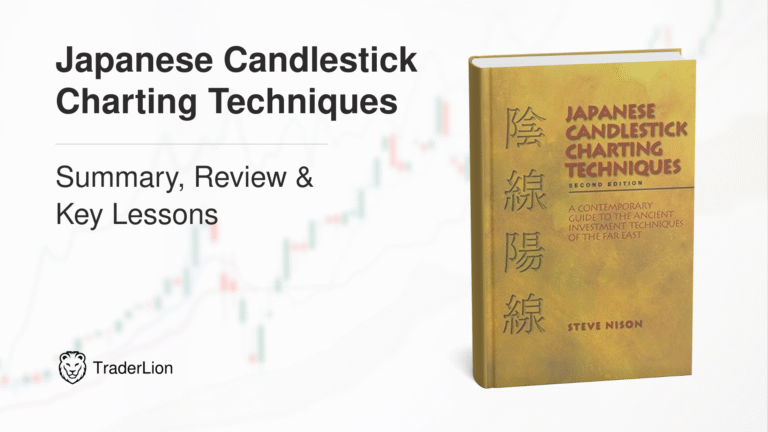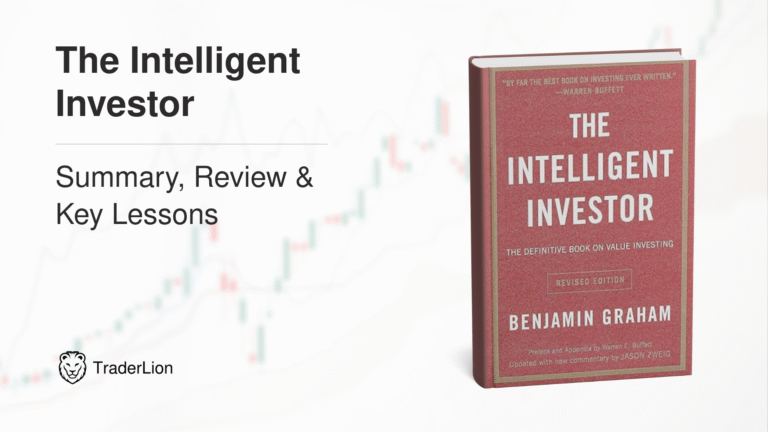
The Intelligent Investor by Benjamin Graham Key Lessons and Review
Published: June 19, 2025
It is no secret that many traders struggle with emotional decision-making during market volatility. One day you feel invincible. The next, your confidence plummets. This rollercoaster often leads to poor risk management, chasing trends, and overtrading — all of which erode returns. The Intelligent Investor by Benjamin Graham addresses this exact pain point: how to cultivate a rational, disciplined mindset in markets that constantly tempt traders to do the opposite.
While originally written for long-term investors, the principles in The Intelligent Investor are just as vital for active traders today. Graham lays out timeless guidance on managing risk, handling market cycles, and maintaining discipline. In an industry flooded with noise, his emphasis on margin of safety and emotional control helps traders focus on what really matters: protecting capital and thinking clearly. For traders looking to ground their strategies in proven wisdom rather than fleeting tactics, this book offers tremendous value.
Quick Facts About The Intelligent Investor
Who Is Benjamin Graham and Why Listen?
Benjamin Graham is widely regarded as one of the greatest investment thinkers of all time. His influence on modern investing is profound. Before Graham, most market participants relied on gut feelings, rumors, and mechanical rules of thumb. Graham changed that. He brought rigorous analysis, discipline, and a focus on business fundamentals to the practice of investing.
Never miss a post.
Sign up to get instant notifications when we publish a new post.
Through decades of experience, including surviving the 1929 crash and managing the Graham-Newman fund with an annualized return of at least 14.7% from 1936 to 1956, Graham proved that a rational, principled approach could succeed even through volatile markets. His teachings shaped Warren Buffett and countless others. Any trader looking to build a lasting edge should study his work.
What is The Intelligent Investor About?
This book is a masterclass in how to approach markets with clarity and discipline. Graham emphasizes understanding the true value of a stock as a business, not just a ticker. He warns against emotional swings and urges traders to buy when pessimism reigns and sell into excessive optimism. The book teaches that risk management, patience, and humility are more important than prediction or excitement.
Rather than offering a quick-fix trading system, Graham provides a durable mental framework to survive and thrive across market cycles.
The Intelligent Investor Chapters at a Glance
Why The Intelligent Investor is a Must-Read
First, this book arms traders with a proven framework for thinking clearly in any market condition. Graham’s emphasis on margin of safety, realistic expectations, and emotional control helps traders avoid the most common pitfalls that destroy performance. His lessons on buying from pessimists and selling to optimists are timeless.
Second, it reinforces that successful trading is not about superior intelligence or secret indicators. It is about discipline and patience. Graham’s ideas cut through the noise, offering mental tools that traders can apply every day. Whether you trade stocks, futures, or options, this book can help anchor your strategy and sharpen your execution.
Top Lessons to Apply to Your Trading
1. Always Demand a Margin of Safety
This concept teaches that traders should never risk capital without a cushion. In practical terms, this means using conservative position sizing, never overleveraging, and entering trades only when the reward-to-risk ratio is compelling. Many traders lose because they chase setups without enough margin for error. Graham’s lesson forces you to prioritize survival.
2. The Market is a Pendulum
Graham describes markets as swinging between unsustainable optimism and unjustified pessimism. Traders who internalize this can spot when fear is creating opportunities or when greed is creating danger. It teaches patience — often the hardest trait for active traders.
3. The Price You Pay Determines Return
Many traders enter trades too late, after much of the move has already occurred. Graham reminds us that your entry price is crucial. Buying at stretched levels reduces your edge and increases risk. Waiting for a better price is often the smarter choice.
4. Control Your Behavior, Not the Market
You cannot control the market’s next move, but you can control how you respond. Graham stresses that your temperament is more important than predictions. Traders who remain calm and disciplined outperform those who react emotionally to every price swing.
Common Mistakes The Intelligent Investor Helps You Avoid
1. Overtrading
Graham warns against trading too frequently, which incurs unnecessary costs and taxes. Many traders churn their accounts trying to catch every move. The lesson: be selective, focus on high-quality opportunities, and trade less to profit more.
2. Chasing Performance
Traders often buy what is already moving, assuming it will continue. Graham teaches that buying into strength without margin of safety invites losses. Instead, seek value and setups with a true edge.
3. Ignoring Market History
Graham emphasizes that markets are cyclical. Traders who ignore past patterns fall into the same traps as those before them. Studying market history helps traders anticipate likely scenarios and manage expectations.
Best Quotes from The Intelligent Investor
“The market is a pendulum that forever swings between unsustainable optimism and unjustified pessimism.”
This quote reminds traders to stay grounded. When euphoria runs high, it is time for caution. When panic sets in, it is time to look for opportunity. Awareness of market psychology is a key edge.
“A stock is not just a ticker symbol… it is an ownership interest in an actual business.”
Even for short-term traders, this mindset matters. It encourages you to understand the underlying forces driving price rather than blindly reacting to patterns or signals.
“The future value of every investment is a function of its present price.”
Entry price is everything. Traders should not chase. They should wait for high-reward, low-risk entry points. This mindset improves both win rates and long-term returns.
Who Should Read The Intelligent Investor
This book is for traders and investors who want to build an enduring, principled approach to markets. If you are tired of chasing the latest fads or getting burned by emotional trades, The Intelligent Investor will resonate. It is particularly valuable for intermediate to advanced traders who already understand basic market mechanics and want to refine their thinking.
New traders may find some sections dense, but even they will benefit from absorbing the core mindset of risk management and emotional discipline. On the other hand, if you are looking for a step-by-step trading system or chart patterns, this is not the book for you. Graham does not teach market timing or quick wins. He teaches how to think.
Final Thoughts on The Intelligent Investor
Many traders today face the exact challenge Graham addressed decades ago: staying rational amid market chaos. With today’s constant news flow and fast-moving prices, it is easy to become reactive. That leads to overtrading, poor risk management, and inconsistent results.
The Intelligent Investor offers a timeless antidote. It equips traders with the mental models needed to thrive through cycles. Margin of safety, market psychology, and self-discipline — these are the real edges in trading.
TraderLion’s verdict: essential reading. Every serious trader should absorb this book’s wisdom to strengthen their mental game and improve their long-term performance.






